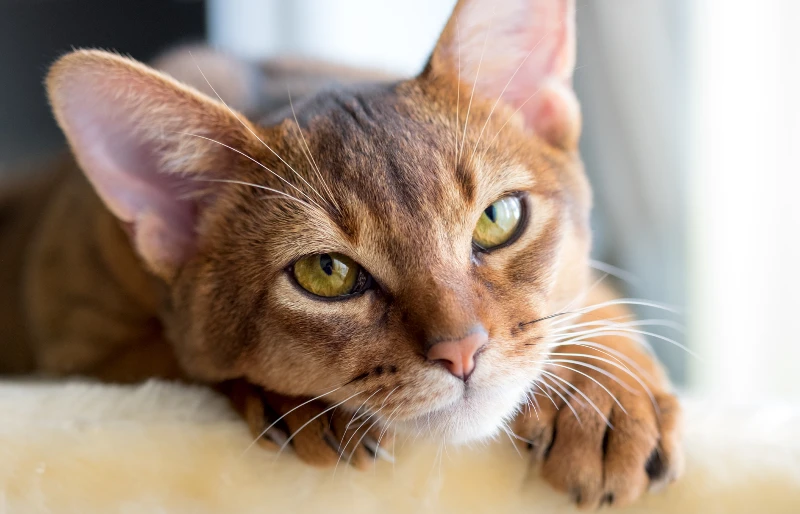How to Make Homemade Pedialyte & Electrolytes for Cats: Vet-Reviewed Step-by-Step Guide
Updated on
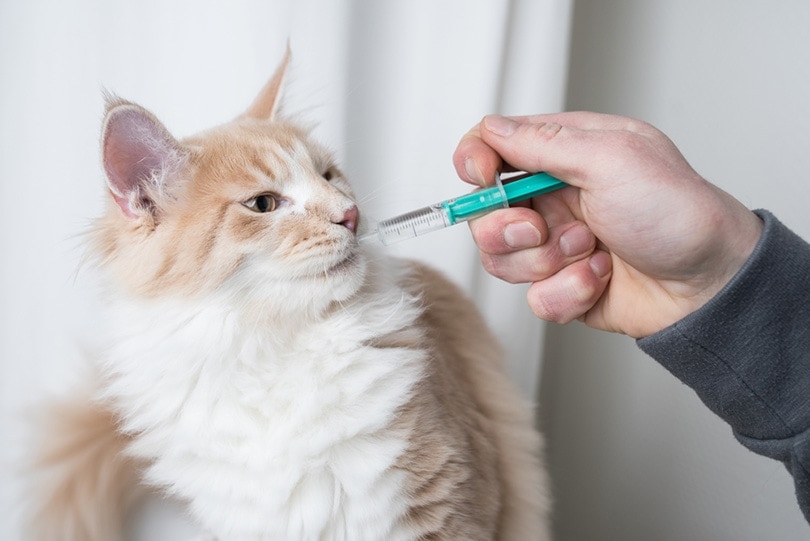
Click to Skip Ahead
Like any living critter, our cats need adequate water in their bodies for all their life functions. But due to their evolution in dry climates, cats have evolved to get most of their water requirements from the flesh of their prey. This means they tend not to drink as much water as they need in their domesticated lives. Combined with a commonly dry kibble diet, this can lead to a risk of becoming dehydrated.
In cases of dehydration, you should take your cat to see a vet for the best possible care. But, in cases of mild heat stress or high temperatures, you can help to avoid severe dehydration by offering your cat some homemade electrolytes.
These electrolytes can also help keep very sick cats stable until they can see a professional. Without adequate pet electrolytes available at home, you can still create a helpful solution with ingredients you likely have in your pantry!
Before You Start: When You Need to See a Vet
Before we get into this guide, any cat suffering from dehydration must see a vet as soon as possible. If you suspect your cat is dehydrated or beginning to become dehydrated, you should first contact a veterinarian before offering homemade electrolytes.
- Lack of appetite
- Constipation
- Frequent urination
- Lethargy
- Panting
- Poor skin elasticity
- Sunken eyes
- Dry mouth and/or gums
A great way to check for severe dehydration quickly is the pinch test. Gently pinch your cat’s skin so that it forms a tent shape in your fingers. If your cat is adequately hydrated, the skin should bounce back quickly when you let go. In severe dehydration, the pinched skin will stay in the pinched tent position; if this is the case, call your vet!
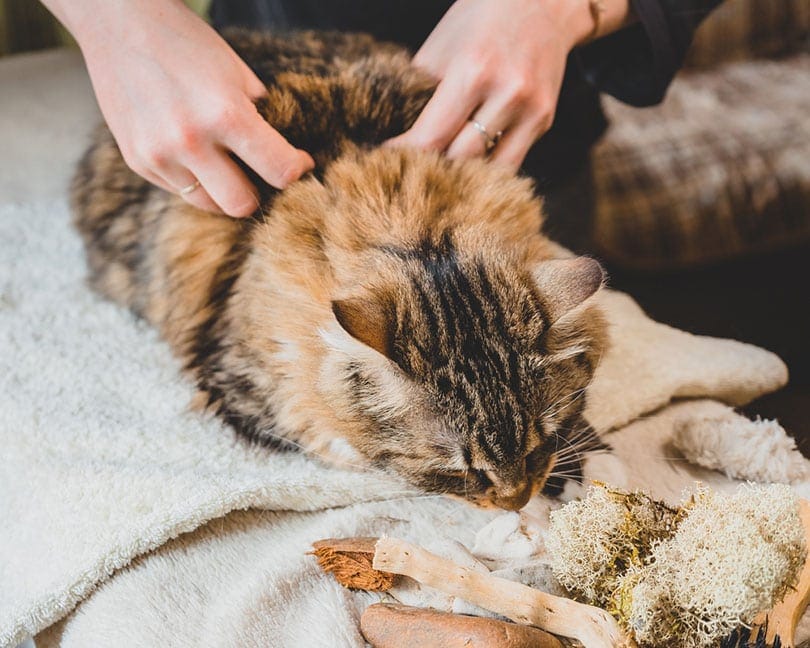
Homemade Pedialyte and Electrolytes for Cats
Equipment
- Electric kettle
- Large mixing jug (over a liter)
- Mixing apparatus (a whisk is ideal)
- Air-tight container
Materials
- 1 liter water
- 1 teaspoon salt
- 1/2 teaspoon baking soda
- 3 tablespoons pure honey
Instructions
- Gather the IngredientsAll four of the ingredients in this electrolyte solution are everyday household staples. However, there are a few things to consider. The honey should be a pure variety. While most honey is packaged pure, some types will have added syrups or sugars. While you should try to avoid this, they will be okay in a pinch. The salt should be regular table salt. Larger salt pieces or rocks will be more difficult to dissolve into the solution properly.You can use any water for this solution as harmful bacteria will be eradicated with boiling. However, if you have mineral water available, this may be more beneficial than regular tap or bottled water. Mineral water has naturally higher levels of electrolytes due to its source, so that it can boost the hydration properties of your solution.
- Boil the WaterBoiling the water is essential for a couple of reasons. Firstly, the water needs to be hot enough that the other three ingredients will easily dissolve and mix into it. Secondly, boiling water will destroy any harmful bacteria or microorganisms residing in it. This is especially important if the electrolyte mix is going to an immunocompromised cat, e.g., a sick, dehydrated, or elderly cat. Harmful bacteria will be a higher risk to cats who are under stress.
- Mix ThoroughlyOnce the water has boiled, mix in the honey, baking soda, and salt. These three ingredients should dissolve quickly in the heat of the water, and thorough mixing will blend the ions of all elements into one cohesive liquid.
- Cool Before UseThe electrolyte mix should then be left covered to come to room temperature. The electrolyte mix should not be given at either high or low temperatures as extreme temperatures can cause burns and cost your cat more precious energy to turn to a usable temperature.
- StorageThe leftover electrolytes should be stored in an air-tight container to reduce the risk of contamination. It should be kept in the refrigerator for optimum quality but returned to room temperature before use. In addition, it should be used within 24-hours for maximum benefit.
Offering Electrolytes to Your Cat
As a Supplement
How you give your cat electrolytes will depend on the situation’s urgency. Suppose you give them electrolytes for a purely preventative or supplementary measure on a hot summer’s day. In that case, offering one part of this solution mixed with two parts of water in their drinking plate should be enough.
However, you should also have some plain drinking water available. If your cat dislikes the electrolyte mixture, they may avoid drinking water entirely. In this case, your attempts to boost hydration could contribute to a dehydration risk!
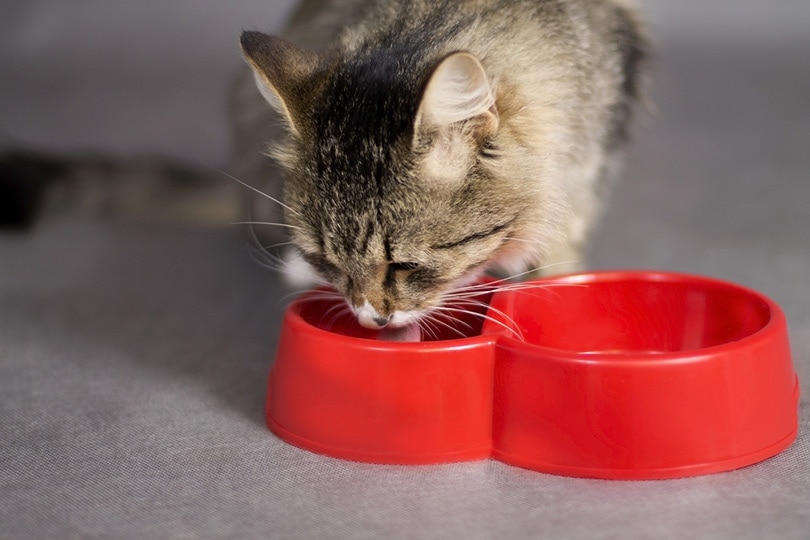
For Rehydration
If your electrolyte solution is for a more dire situation, then administering it will be different. After you have gotten the advice and approval of your vet, this homemade electrolyte can be administered by actively feeding it to your ill cat.
If your cat is strong enough, adding the electrolyte mix to their favorite food will have the best effect. If your cat is very lethargic, they will likely sit still as you syringe drip small amounts of electrolyte into their mouth for quick action.
In this “force-feeding” case, you mustn’t over-administer the electrolyte solution. Large consumption of water in short periods can have an adverse effect by causing stomach upset, vomiting, and further fluid loss.
Tips for Palatability
Suppose your cat isn’t overly excited about drinking the electrolyte mixture. In that case, you may need to get creative to give them their extra boost of electrolytes.
The trick is to make the solution appealing to your cat’s senses, and the best way to achieve this is by making it taste delicious!
You can mix it into their favorite wet food or dilute it into chicken or bone broth. Another option is using meat-based baby food, such as turkey flavor, to make a moist mixture that your cat will think is a great treat. This baby food trick should only be used occasionally, in cases when it really needed, and not as a regular treat.
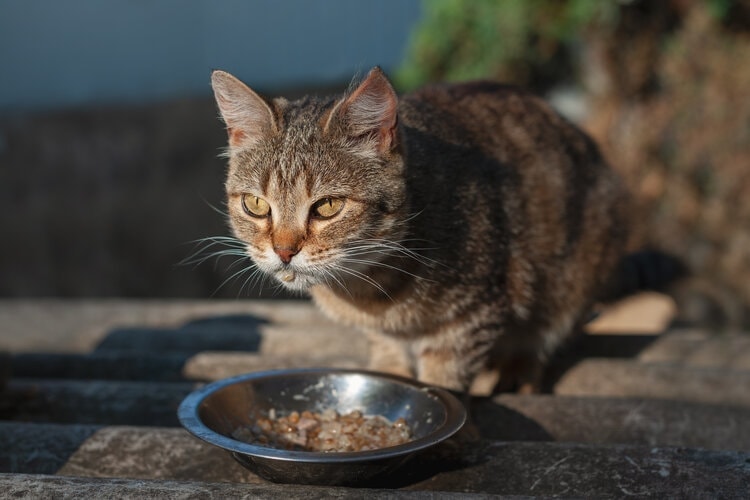
Preventing Dehydration in Your Cat
While electrolytes can be a great tool in helping keep your cat hydrated, there are also many ways you can care for your cat to encourage them to drink enough water.
- Enough water bowls: If you have multiple cats but just one water bowl, one cat may dominate the other and keep them away from the water bowl when thirsty. Offering numerous water bowls around the home will increase options for a multi-cat household.
- Type of water bowl: Cats are incredibly particular! A stubborn cat may not drink any water simply because they don’t like the bowl the water is in. Experiment with different shapes and sizes of bowls to find your cat’s preference. Often the issue lies with the whiskers; deep and small bowls are disliked as cats have to rub their whiskers to reach the water.
- Keep water fresh: This one goes without saying. Regularly change the water and clean the water bowl to ensure the water is always fresh and appealing.
- Water fountain: Many owners have successfully increased their cat’s water intake by giving them a water fountain. Cats have evolved in the wild to find water sources from running water, like streams. In a domestic setting, a water fountain can attract your cat with both the visual and sound of running water.
- Bring moisture into their diet: Moisture can easily be upped in your cat’s diet by offering foods with higher moisture levels. If your cat only eats kibble, then consider giving them “wet” foods also. If they refuse, you can experiment with soaking their favorite kibble in water (or cat-friendly chicken broth!)
- Get regular vet check-ups: Often, severe levels of dehydration occur as a secondary issue to another preexisting health concern. Closely monitoring your cat and taking them to get regular health checks can help you get on top of emerging issues before they result in dehydration.
If you want to encourage your cat to drink more water, a great cat water fountain can be just the thing.
- Premium 304-Grade Stainless Steel - This metal cat water fountain is hygienic, with superior...
- Serene & Healthy Cat Drinking Fountain Experience - With whisper-quiet pumping & an advanced...
Our Hepper Stainless Steel Cat Water Fountain has a minimalist, modern design, advanced triple filtration, and adjustable water flow. This fountain is quiet, sturdy, and easy to clean, making it a low-fuss addition to your home.
Final Thoughts
This homemade electrolyte recipe is a true gem. It’s quick to make and contains easily accessible ingredients. This solution can help keep your cat hydrated over the summer season as a supplement to their diet. It can also act as a quick response to a dire situation. Still, we must reiterate that signs of dehydration should be met with immediate vet advice!
Featured Image Credit: Nils Jacobi, Shutterstock







